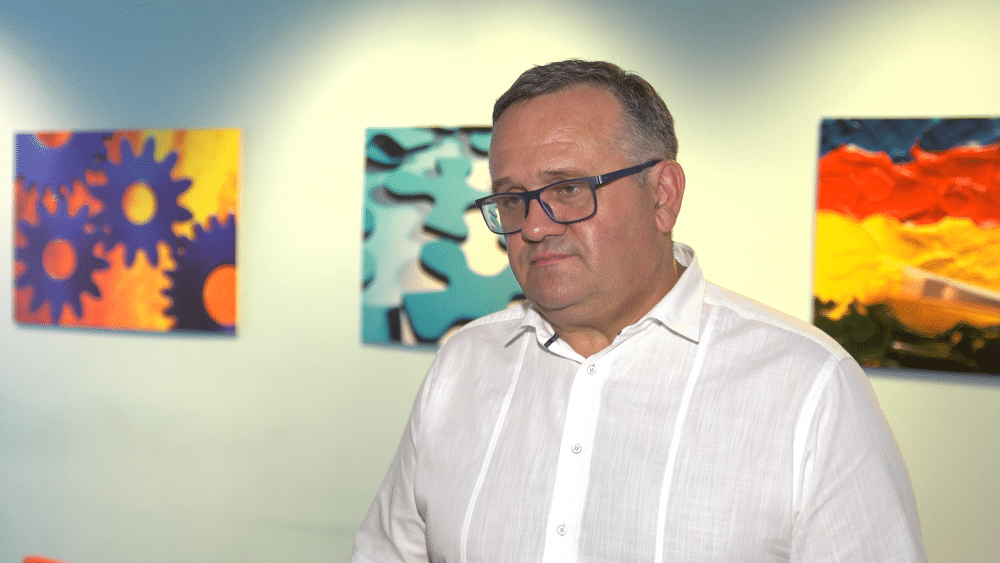Farmers and agricultural producers are complaining about a shortage of workers. Alongside rising production costs, this is one of the biggest threats to their continued operations and is hindering further investments. Polish farmers find it difficult to compete with producers from Western or Northern European countries in terms of wages. Although wages in Poland are still lower than in Germany or Sweden, their recent increases have significantly impacted the agri-food sector.
“There is a huge problem and threat to production because, during the summer when all the harvests in Poland peak, we don’t have enough workers. There is a big discussion about where to find them because Ukrainian workers are no longer sufficient for the Polish economy at the moment. We have developed in many agricultural aspects, particularly in production. This seasonality means that we need a large number of people to work within a very short period of three to four months,” says Paweł Myziak from the Association of Pepper Producers of the Republic of Poland – Southern Mazovia, speaking to Newseria Biznes.
Business organizations, which in early August appealed to the relevant ministries for “an open and favorable approach to legal, sustainable labor immigration,” have highlighted that around 2 million Ukrainians work in Poland annually. However, the resources that Polish businesses, including farmers, have relied on are gradually depleting. It’s also essential to consider that some Ukrainian workers may want to return home and participate in rebuilding their country after the war ends. Therefore, businesses are calling for openness to workers from other countries and regions.
According to experts, the lack of willing workers for the harvest is part of a broader trend of declining enthusiasm for working in agriculture.
“The number of farms is decreasing at an alarming rate year after year, and there are fewer and fewer young farmers. Theoretically, those who are still in the industry today could expand their production areas, as the opportunity exists, but they cannot do so because they lack the workforce needed to produce profitably,” explains Paweł Myziak.
Another issue is the wage expectations of seasonal workers. The expert notes that this is related to the increase in the minimum wage, as well as inflation and the rising cost of living.
“Many people complain that despite higher earnings, they can afford fewer and fewer purchases. It’s the same with us. Although the beginning of the year and the first part of the season were relatively decent in terms of vegetable prices, when we compare that with our costs, particularly labor costs and the lack of access to people willing to work in agriculture, the enthusiasm quickly fades. You can produce a lot, incur significant costs, and then fail at the harvest stage because there’s no one to pick and prepare the produce,” says the expert from the Association of Pepper Producers of the Republic of Poland.
In his view, this situation is a bad omen for the coming years. It signals a high risk that production will decrease year by year, particularly for more demanding vegetables and fruits.
“This is the first year in the history of pepper production in Poland where we will have smaller harvests and fewer plantings than in previous years. Over 30 years of continuous development, with new varieties and types, and suddenly 2022 comes with a wavering situation, followed by 2023, which still moved forward due to momentum, and now we have 2024, where we see the first empty greenhouses, unharvested peppers, and a certain degree of disillusionment among producers due to the lack of workers,” says the representative of the Association of Pepper Producers of the Republic of Poland.
Pepper producers also face strong competition from abroad, which lowers its prices during the months when the Polish vegetable is in season, forcing further price reductions on the market, often pushing them below profitability levels.
According to a report by the Central Statistical Office (GUS) on agricultural trends (second half of 2023), the most frequently cited barriers to the development of farms last year were low selling prices and high production costs. These were identified by 21% of all farms. Paweł Myziak emphasizes that running a farm can be compared to running a business. The increase in economic uncertainty affects not only entrepreneurs but also farmers. The GUS report indicates that the changes in the second half of 2023 were assessed negatively by farmers, and the forecasts for the first half of 2024 were also pessimistic. The index of changes in the general situation of farms stood at -35.6, still significantly negative, indicating worse economic conditions, although slightly better than in previous surveys.
“We, as farmers, are not an isolated island unaffected by everything happening around us. Agriculture usually experiences economic crises relatively mildly, as has been the case until now. But will it be the same this time? We’ll see. External factors such as the war in Ukraine and imports influence us. Everyone wants to take advantage of the 38-million-strong market here, wanting to sell something. We are a very attractive commercial target because our society is becoming wealthier, we are reaching for new food products, we can afford more expensive, more sophisticated products, and we are reaching for vegetables imported from around the world. So, we are a market where everyone wants to place their products for sale. We also need to think about stabilizing our internal market and defending it a bit while also demonstrating that we can produce and sell as the third-largest producer of fruits and vegetables in Europe,” assesses Paweł Myziak.
According to GUS research, in the second half of 2023, nearly one-third of farm operators said the war in Ukraine had a significant impact on their farm’s operations (a slight decrease compared to the first half of 2023). One in five identified it as a factor threatening the stability of their farms—a percentage that is gradually increasing.
